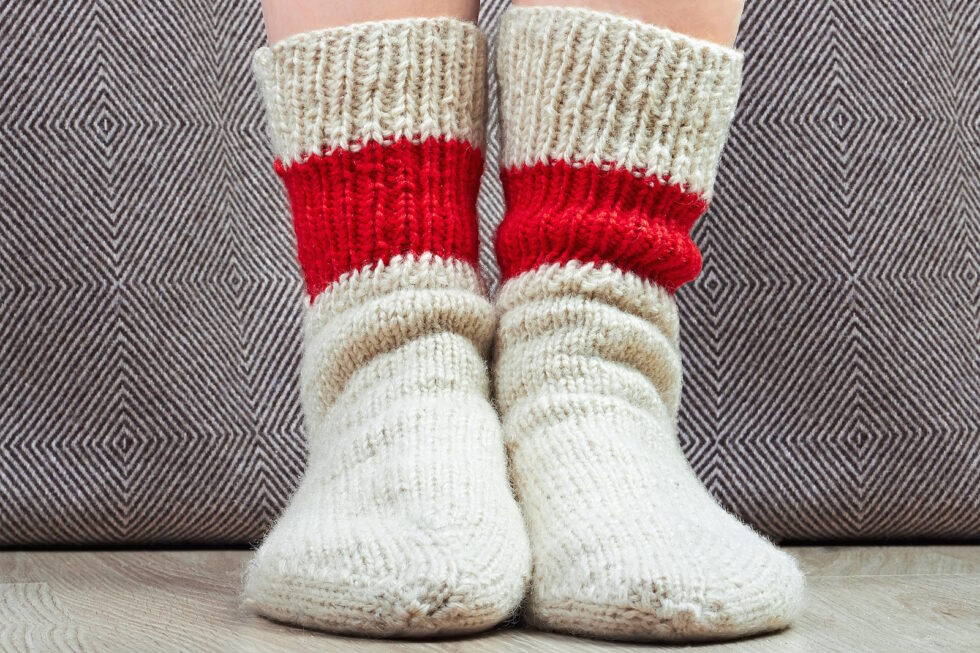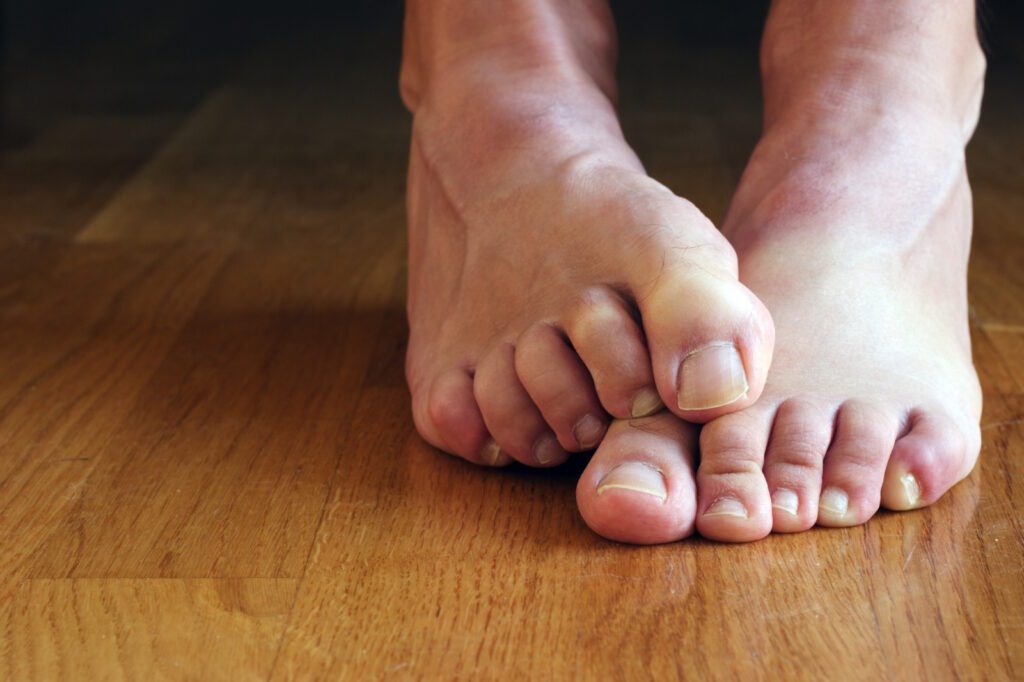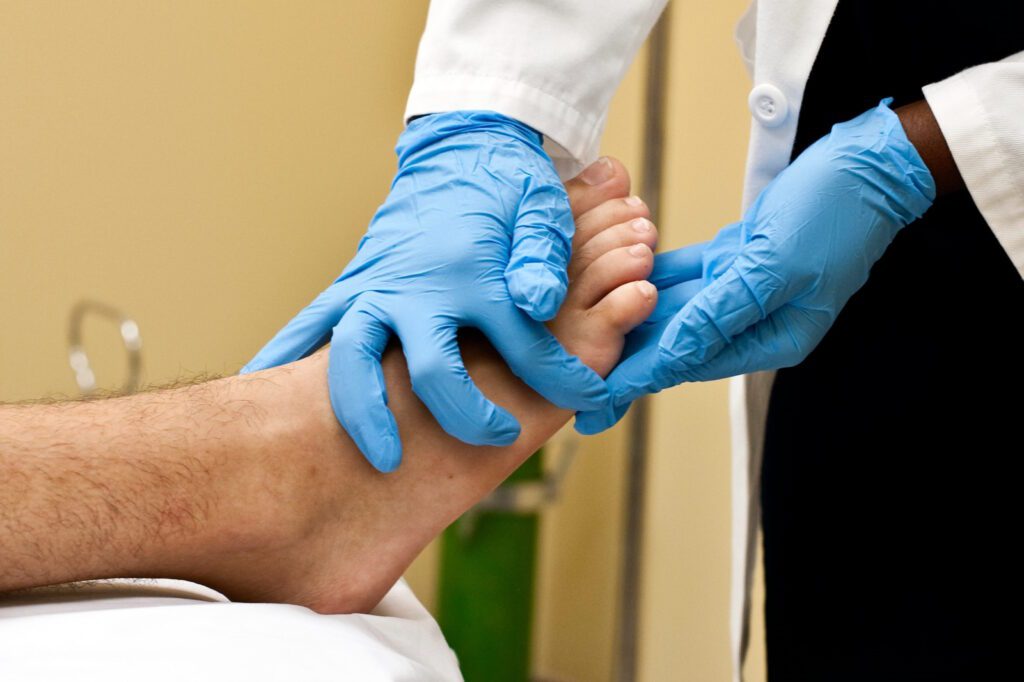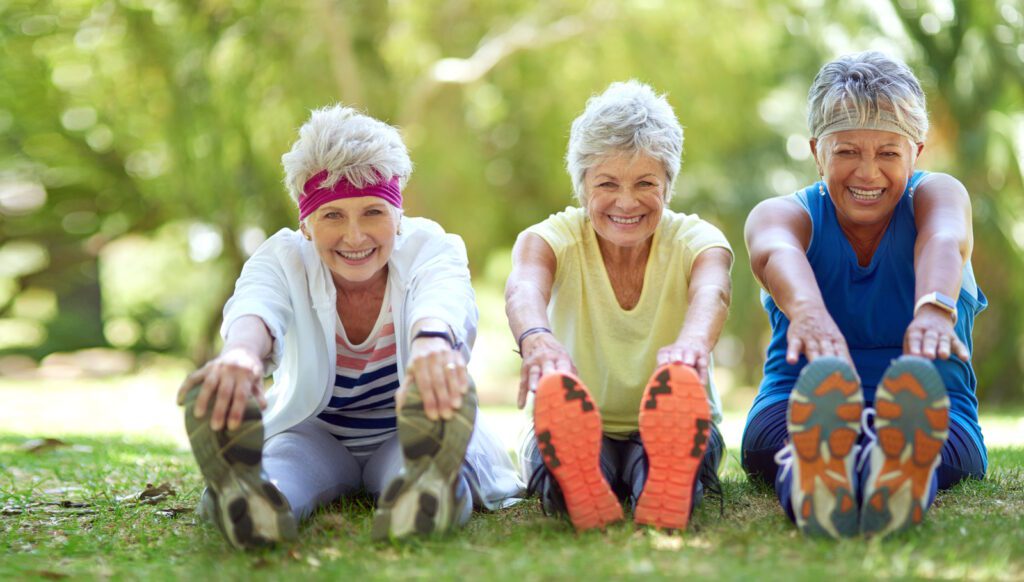Chronically Cold Feet: Why Are My Feet Always so Cold?
Author: StrideCare Internal Team

Jane* has been complaining lately about what she now refers to as chronically cold feet. At first, she didn’t think much about it because it wasn’t an all-the-time situation. Plus, in wintertime she managed the sensation by throwing on a pair of extra thick socks. But now, nothing seems to help. Her feet are clearly several degrees colder than the rest of her body and at times, they feel like blocks of ice.
While it’s common to occasionally experience cold feet, chronically cold feet aren’t something you should ignore. It can be a telltale sign of a vascular issue and poor blood circulation in your extremities. With April designated as National Foot Health Awareness Month, it’s important to point this out and remind everyone that more than 20 million Americans suffer from some form of vein disease. Sadly, many of us don’t recognize early warning signs like cold feet until the condition is uncomfortable and more difficult to reverse.
We’d love for you to schedule an appointment with StrideCare and get the treatment you need today.
Are You Experiencing These Cold Feet Symptoms?
- Feet that are cold to you, to the touch, or both
- Your feet are consistently at a lower temperature than the rest of your body
- Your feet take longer to warm up if exposed to cold temperatures
- Throbbing, muscle cramping, swelling
- Skin discoloration on your feet
- Numbness and/or tingling feet
- Stunted nail and hair growth
What Causes Cold Feet?
According to a study by the American Podiatric Medical Association, 77% of Americans say they have experienced foot pain or some sort of foot-related issue. This can include everything from pain in the ball of the foot, bunions, nail problems, stress fractures, foot ulcers, circulatory issues, and more. And yet, only one-third of those people seek expert care. This is why National Foot Health Awareness Month is so important, as it shines a much-needed light on the importance of overall foot health, the challenges millions of people face every day, and tips to help everyone keep their feet in the best possible condition.
Chronically cold feet can be a sign of poor blood flow. Here’s why. Your veins are a network of powerful vessels whose purpose is to carry blood back to the heart. That’s easier said than done when considering they are working against gravity. But healthy veins are always up to the task. The problem is when your veins aren’t healthy, usually because of poor diets, age, alcohol, smoking, obesity, and more. Rather than flowing freely throughout veins to support systems critical to cardiovascular health, blood can flow backward and begin to pool in your extremities. This can lead to several symptoms, including bulging veins and cold feet.

These vascular conditions may be to blame for your cold feet:
Varicose veins
Roughly 25% of men and women in the United States have varicose veins, which are those twisted, ropey, discolored bulging veins on your legs. While numbness and chronically cold feet aren’t always directly caused by varicose veins, they are signs of an obvious blood flow issue. And if left unchecked, blood flow to your feet will be inhibited, thus leading to cold feet.
Peripheral vascular disease
This is a condition where plaque buildup on the walls of blood vessels causes them to narrow and leads to poor blood circulation to the kidneys, intestines, arms, legs, and feet. When this happens, a person has cold feet and is at risk for coronary artery disease, heart attacks, or strokes. The scary part about peripheral vascular disease is that while symptoms can vary widely, up to 4 in 10 people don’t even have symptoms at first.
Diabetic vascular disease
While anyone can be diagnosed with a vascular disease, diabetic patients are typically at a higher risk. In fact, as many as 100 million diagnosed diabetic patients worldwide are also at risk of developing a diabetic vascular disease, and one of the symptoms is cold feet.
Deep vein thrombosis
DVT is a life-threatening condition where blood clots form in one of the veins deep within your body. Swelling only on one side is perhaps the most worrisome sign you should seek expert vein care. One-sided swelling may indicate a blood clot or DVT. One common complication of DVT is known as post-thrombotic syndrome. People with this syndrome may have a swollen leg that feels heavy and hurts. More severe cases of post-thrombotic syndrome can lead to cold feet and the formation of chronic wounds.
Venous insufficiency
This is caused by broken vein valves that no longer hold a proper seal. As a result, poor blood flow from the veins in your legs back up to your heart will cause blood to pool in your legs. This can cause a variety of issues, including leg swelling, varicose veins, cramps, cold feet, skin changes, and leg ulcers.

The reality with vascular and vein disease is that the symptoms that arise show themselves in stages. At first, it may be a few unsightly spider veins and varicose veins that aren’t painful at all. But as the disease progresses, patients experience a variety of symptoms, including chronically cold feet.
How Do I Treat My Chronically Cold Feet?
- Eat healthily — Replacing foods that cause inflammation, weight gain, and sap your body of important energy and nutrients with fruits and vegetables, foods high in Vitamin C and E, fiber-rich foods, and whole grains are critically important to improving overall vein health.
- Exercise — The American Heart Association recommends at least 150 minutes per week of moderate-intensity aerobic activity (running, walking, jogging, weight training, etc.) and to increase that gradually over time.
- Move around more — Moving around on the job promotes increased blood flow throughout your body and in the veins in your lower extremities. Even if you’re stuck at work for longer stretches, an easy fix is to get up every 30 minutes and walk around to get blood pumping. You may also find that you’re more productive after short breaks.
- Stretch — Stretching is great for improving flexibility, but it also helps improve circulation. Most people don’t think of that as an inherent benefit, especially for their legs, feet, and calves.
- Be more active at home — Another great way to increase physical activity and improve cold feet is to limit how much you lounge on the couch or sit. Walk up and down the stairs at home, do some chores, etc.
- Wear compression stockings — Compression socks for vein health are a great conservative treatment option, as they support your legs by applying gentle pressure. This helps with circulation, swelling, and painful legs during long work shifts, plane flights, and other long bouts of limited physical activity.
- Seek a specialist – While cold feet are frequently associated with reluctance to do something that makes you nervous, it can also be a sign of a more serious medical condition that may be caused by inadequate blood flow. It’s crucial to contact a doctor if you consistently experience cold feet. If you have chilly feet that don’t seem to be getting better, your primary care doctor or podiatrist would typically send you to a vascular specialist.

StrideCare Can Help with Chronically Cold Feet
Speak to your doctor if you are worried about your cold feet. A specialist at StrideCare can do an examination to evaluate if circulation problems are suspected. Your doctor performs a physical examination, reviews your symptoms and medical history, and may suggest a venous ultrasound to further assess blood circulation.
Please don’t let having cold feet all the time affect your life. If there’s an underlying vascular illness that’s causing your symptoms and it isn’t treated, it could get worse and result in more serious problems. If you have chilly feet that don’t appear to be getting better, the knowledgeable staff at StrideCare advises you to schedule a consultation
StrideCare has long been a leader in performing leading-edge procedures to treat vein disease and help patients with vascular-related symptoms. This includes varicose veins, as well as spider vein treatment, venous insufficiency, restless leg syndrome, May-Thurner Syndrome, and more—all the while providing compassionate patient care.
Prior to starting any new treatment or questions regarding a medical condition, always seek the advice of your doctor or other qualified health provider. This information is not a substitute for professional medical advice.
StrideCare serves the South Texas area including Houston, San Antonio, Austin, Round Rock, Bastrop, Brushy Creek, Cedar Park, Converse, Georgetown, Hutto, Kyle, Leander, Marble Falls, New Braunfels, Pasadena, Pearland, Pflugerville, San Marcos, Schertz, Houston, Sugar Land, Katy, Webster, Bay City, Clear Lake, Lake Jackson, The Woodlands, Universal City, Spring, Kingwood, Stafford, Conroe, Texas City, Cypress, League City, Bellaire, and more.
*Patient stories are true. Names and/or photos may be changed to protect patient confidentiality.


